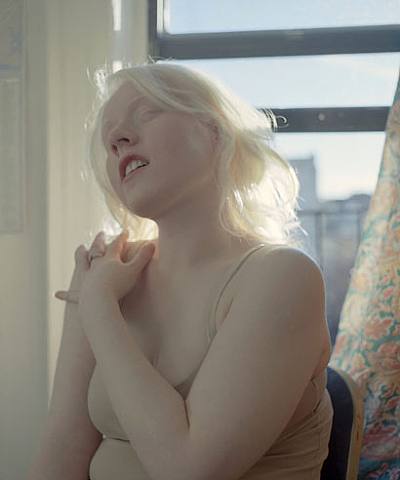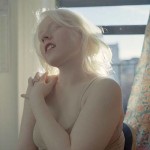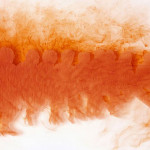By CARL GUNHOUSE
Why has the installation of the Museum of Modern Art's New Photography series created so little interest in the photography world?
Last time I checked, there were no reviews in the Village Voice, New York Times, not even Alec Soth's blog, nada, nothing. The largest contemporary museum in an art epicenter can put on an annual show of new photography, and no one notices. How can this be? Do museums no longer matter, are annuals of all kinds passe, does MoMA have the street cred of your mom? No, if the New York Times archive is a good judge of contemporary response to the New Photography series, it has been seen from its inception in 1985 as an outdated show shown by an institution believed to be out of the loop.
In his Times review of the first New Photography show, Andy Grundberg was mildly complimentary: "These are, in short, four very talented photographers. But whether together they constitute something called �New Photography' is another matter."[1] In 1990, Roberta Smith wrote, "While their work is competent and sincere, it fills familiar esthetic slots in depressingly unadventurous ways."[2]
Which leads to my personal favorite, Charles Hagen's review of Peter Galassi's attempt in 1992 to breathe life back into the series by doubling its size. Hagen suggests Galassi and the museum successfully reaffirmed his belief that photography as a medium had nothing left to offer " . . . if in the end, this show seems more dogged than exciting, conscientious rather than risk-taking, at least it provides a good reflection of the moment."[3]
Over the next couple of years, the critical response tended to warm until MoMA canceled the series in 1999 in preparation for the museum's renovation. When MoMA's reopened in 2005, the series was again met with disinterest.
Much of the past criticism was based on the MoMA's chronically ambiguous definition of the New Photography series. Many of the critics seemed to hope the series would be a venue for MoMA to promote daring new photographers or a curatorial effort to pin down the ever-transient definition of contemporary photography. But curator after curator has stuck with the company line established by John Szarkowski, the legendary long-time director of the Department of Photography and first curator of New Photography, who said the series was intended to "represent the most interesting achievements of recent photography."[4] Or the New Photography series, consists of photographers whom someone on the curatorial staff enjoyed that particular year. Over time, this also came to include exposing Americans to international photographers. The end result has become an ambitionless annual that is heavily weighted to international photographers.
Despite all this, the New Photography series has served as a launching pad for numerous photographers who have made a substantial impact on the medium and have had surprisingly long careers.
New Photography 1 in 1985, that disappointed Andy Grundberg, featured the then far-from-renowned Judith Joy Ross, arguably the greatest portraitist in the last 40 years, as well as the then not-cutting-edge-enough but continuously-interesting Zeke Berman and Michael Spano. The 1987 show, deemed "fairly conservative"[5] by the Times, featured early work by Tom Roma and Paul Graham, both of whom have gone on to a great deal of success, including Roma's solo Come Sunday show at MoMA and Graham's solo American Night show at PS1. Neither are particularly experimental nor are they working in a dramatic new style, but both showed pictures in that year's New Photography that remain standouts in their illustrious careers.
And this isn't even to mention the 1986 New Photography 2, which featured the work of a very young Philip-Lorca diCorcia, arguably one of the most influential photographers of the last couple of decades. Or the quality but less celebrated photographers who appeared in the early New Photography series like Paul D'Amato, JoAnn Verburg, Abe Morell, Mark Steinmetz and Mike Mandel. As well as those who appeared in the more celebrated New Photography series during the late 1990's like Thomas Demand, An-My Le, Rineke Dijkstra, Vik Muniz, Richard Billingham, Wolfgang Tillmans, Uta Barth, and Rachel Harrison.
In the big picture, the New Photography series has done an excellent job of selecting artists who at the time might not have been cutting-edge but certainly were talented and making quality pictures.
The collective curators of the New Photography series have wisely not taken on the herculean task of trying to define contemporary photography, though you can certainly look over the history of the series since 1985 and see they have done a great job sketching out the large photographic movements of the late 80's and early 90's.
They might have missed the main brunt of the German photographic explosion in the 1990's, but in 1988, curator Lisa Kurzner was skilled enough to show Michael Schmidt, then unknown to an American audience and the other great influence on 90's German photography not named Bernard and Hilla Becher. The series also presented the core of the great 90's German boy band that was Andreas Gursky (the quiet one), Thomas Struth (the quiet one), and Thomas Ruff (the dangerous one who was also quiet). And in 1996, the New Photography show did highlight the early work of the most interesting of the Germans, Thomas Demand.
As for the late 80's and early 90's explosion of set-up photographers, the New Photography series missed out on Gregory Crewdson and the collective organism that is the Yale girls, but the series showed Philip-Lorca diCorcia, the only set-up photographer not named Cindy Sherman that matters.
Then you have the 1990's snapshot esthetic. You could not have been more on target than the 1996 New Photography show, which included the then recently-debuted Richard Billingham and Wolfgang Tillmans, who at the time was still known as a fashion photographer, not an artist. And if Rachel Harrison, Sam Taylor-Wood, and Olafur Eliasson in 1998's New Photography show didn't highlight the late 1990s rise of conceptual artists using photography as a tool to make terrible photographs, I don't know what does.
So if the New Photography series has solidified the emerging careers of so many contemporary photographers and has been a relatively reliable guide to where photography is going, why have the last three New Photography shows gathered so little interest in critics or viewers? Got me.
The current show includes the emerging and talented Tanyth Berkeley and her portraits of unique individuals. The selection is less daring then her last appearance at Bellwether Gallery, but her picture of an albino woman leaning back in front of an open window has never seemed so rapturous. Curator Eva Respini's sequencing of the photographs has helped to make sense of Berkeley's rather particular printing style. Her intentional color casts now seem to be integral to the content of the images. The warm creamy-yellow print of Grace in Window next to two earlier portraits printed with a bluish cast seems to trap the relative outsiders in an isolating blue haze. Directly across are two photographs whose titles and printing grant equivalent pictorial meaning to the women's bedspreads and the fact that both are topless. And in between those groupings is a row of slenderly, cropped full-body portraits that leave little to look at besides the subject's physicality, the turn of a foot, distribution of weight, mannish hands. All are printed with a slight softness and a predilection for bohemian period-piece outfits that turn the pictures into updated fun-house versions of the Frick Museum's Symphony in White, No. 2, by Whistler.
As for Scott McFarland and Berni Searle, I think I agree with Charles Hagen: "...at least it provides a good reflection of the moment."
Scott McFarland is the landscape version of the ever-boring Barry Frydlender. McFarland takes a picture of a single scene at different times of day, even different times of the year, and meticulously stitches them together digitally to make one completely uninteresting picture that lacks even a sliver of meaning. Which is in no way helped by his tendency to use what Peter Henry Emerson described in the late 1800's as "the light of two suns," or the prints large scale and undulating point-of-view which makes the pictures almost unviewable. At best, the pictures are skillful illustrations of digital wizardry and will one day make for a great Photoshop text book.
Dull as they are, large panoramics are unfortunately relevant to contemporary photography. For most viewers over a certain age, I imagine there is an assumption that contemporary photography is comprised of nothing but digitally montaged images.
Berni Searle seems to symbolizes an even more interesting contemporary photography phenomenon, that of the return of high modernist photo-abstraction. This seems to have popped up first in the fall of 2006 and continued into this year. Out of no where, like a rash, was a disconcerting number of Chelsea gallery shows that dealt with high modernist photo-abstraction, starting with Walead Beshty photo-grams and modernist art references in his solo show at Wallspace Gallery while at the same time that James Welling showed photo-grams at David Zwirner Gallery. And now modernist photography is being featured in The Guggenheim Museum's, Foto: Modernity in Central Europe 1918-1945.
Now why so much modernism? I don't know, but here is the New Photography show featuring large images that look like Adam Fuss photo-grams, but are actually red silhouettes of family photographs submerged in hot water until they bleed onto the white paper, creating a large red blur. Very modern, very abstract. I wish this wasn't the state of things but it is.
Hopefully the future curators of the New Photography series will choose more photographers like Tanyth Berkeley, and we can allow the return of photographic abstractions and digital montaging to become the historic footnotes they deserve to be.
----
[1] - New York Times, Andy Grundberg, September 15, 1985
[2] - New York Times, Roberta Smith, November 23, 1990
[3] - New York Times, Charles Hagen, November 15, 1992
[4] - New York Times, Roberta Smith, November 23, 1990
[5] - New York Times, From New Talent, Bold New Images, (no listed author), November 13, 1987
- Tanyth Berkeley, Grace in Window, C-print, 2006
- Scott McFarland, Echinocactus grusonii, 2006
- Berni Searle, On Either Side, archival pigment ink on cotton rag paper, 2005
"New Photography 2007: Tanyth Berkeley, Scott McFarland, Berni Searle" is on view September 30, 2007 to January 1, 2008 at The Museum of Modern Art in NYC.
All images are courtesy of the artist and MoMA.







